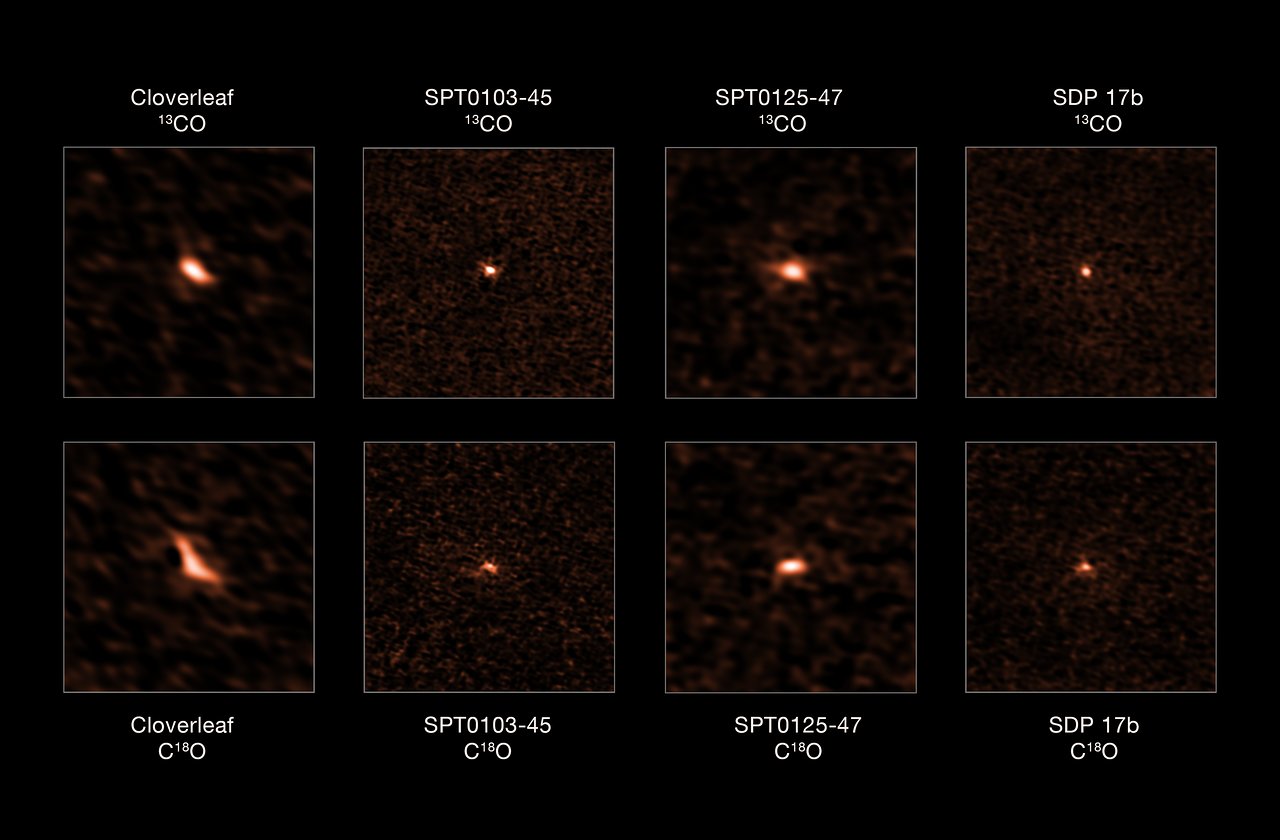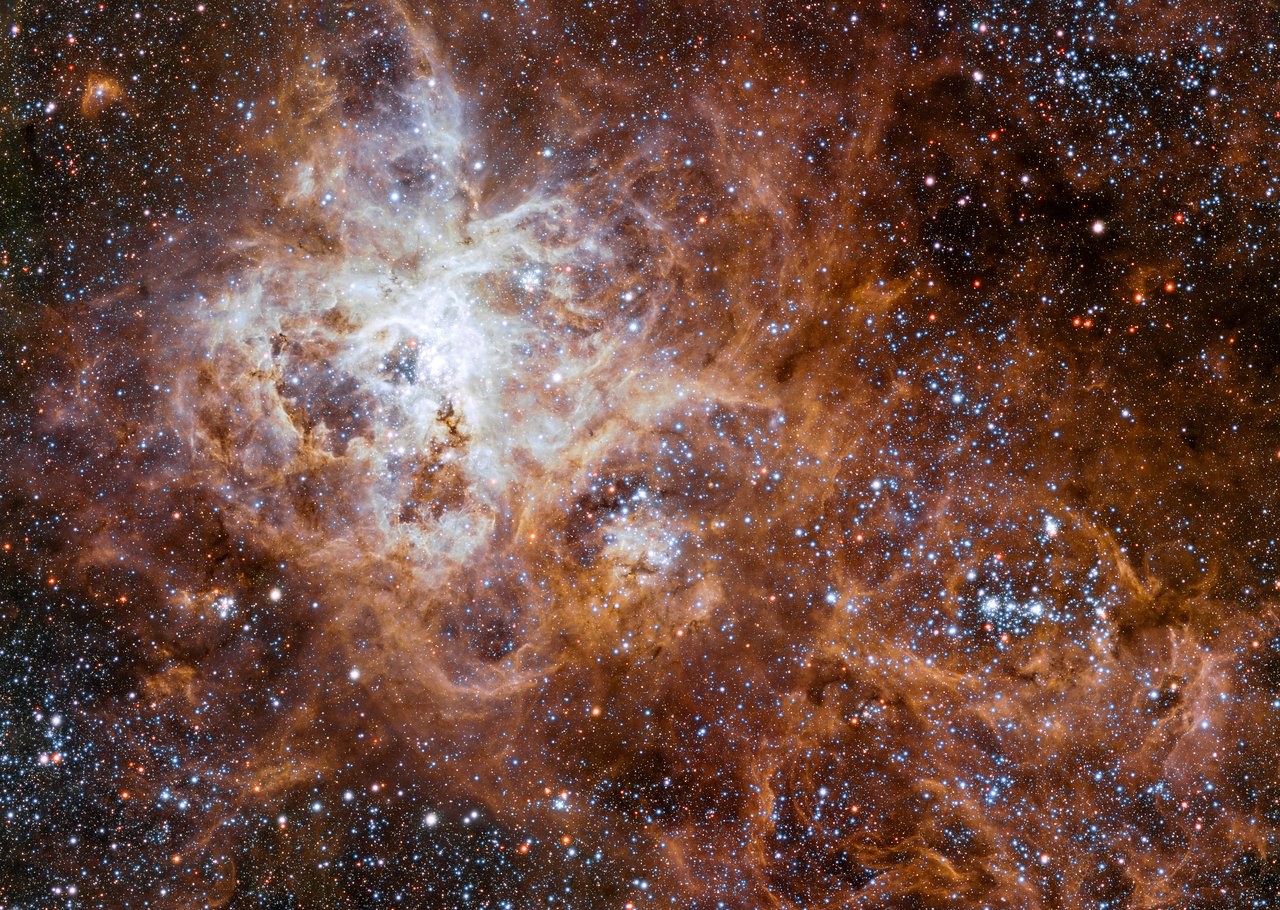Lifting the veil from star-formation areas: more heavyweights than thought
In some areas of space, stars are being formed much faster and much more frequently than in our Milky Way. Astronomers call such areas starburst galaxies. In these areas, the star formation rates are up to 100 times greater than the average in the Milky Way. The high dynamics often produce an extended veil of dust that settles around these galaxies. This makes it harder for astronomers to get a closer look, which would be valuable because, in the early universe, such areas were significantly more common than they are today.
With a new technique, researchers under the guidance of astronomer Zhi-Yu Zhang of the University of Edinburgh have used the European Southern Observatory’s Atacama Large Millimeter/Submillimeter Array (ALMA) to lift the veil from four far-flung gas-rich starburst galaxies. To do this, scientists measured the proportions of the isotopes 18O and 13C. Oxygen-18 is produced to a large degree in massive stars, carbon-13, however, in lighter stars. The result: in the examined galaxies, there must be significantly more massive and thus short-lived stars than predicted based on common models for star formation.
This finding was also confirmed in the areas immediately around these galaxies. A team headed by Fabian Schneider of the University of Oxford in Great Britain used the ESO’s Very Large Telescope (VLT) to perform spectroscopic measurements of 800 stars in the giant star formation region 30 Doradus in the Large Magellanic Cloud. Team leader Schneider describes their results like this: “We found around 30% more stars with masses more than 30 times that of the Sun, and about 70% more than expected above 60 solar masses.”
But that’s not enough.
It also appears that stars might be able to grow significantly larger than previously thought. Schneider said: “Our results challenge the previously predicted 150 solar mass limit for the maximum birth mass of stars and even suggest that stars could have birth masses up to 300 solar masses!“


